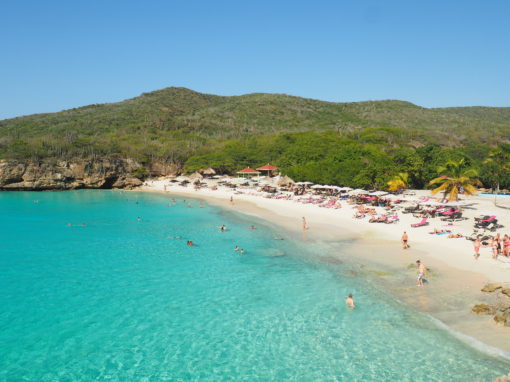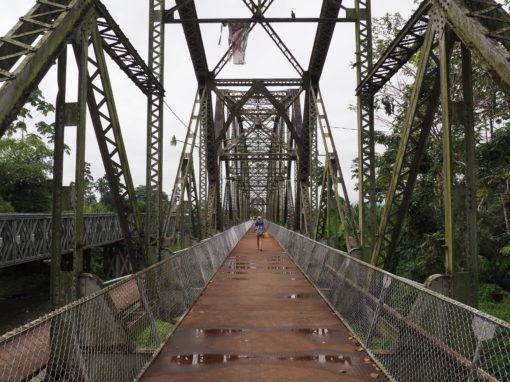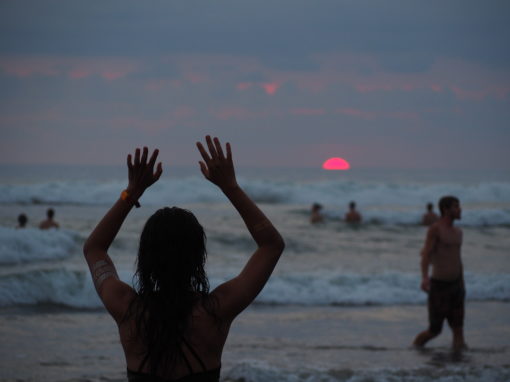WHAT: Releasing baby turtles from their hatch back to the sea. WHERE: Costa Rica, Moín, but basically you can do it at several places in Costa Rica, both west and east coast. HOW LONG: That would depend on how many turtles there are! But somewhat 1 to 2 hours. HOW MUCH: That would depend on the organisation you join. Ask a turtle organization beforehand if you can join them.
The sky is rather dark as we drive all the way up to the coast in Moín, a village just above Puerto Limón on the east side of Costa Rica. The rain season is showing off today; the inland roads are totally flooded. For a moment we even doubt whether the car will make it without drowning in the river like passageways.
Our goal is nonetheless worth the troubles: today we’re going to return some baby turtles, tortuguitas, from their hatcheries at the Tropical Science Center (TCS) to the sea. Well, basically the turtles are doing the biggest part of it themselves, but we’ll stand cheerfully on the sidelines while they’re making their journey.
Over the last months the biologists of TCS have been conducting nightly patrols on the beaches north of Moín, to find recent turtles that have come ashore, or their nests. Without the interference and help of this organization, poachers would probably remove most of the eggs laid by the turtles in the surrounding area. Turtles are one of the most threatened groups of animals. According to the Red Data List of the International Union for the Conservation of Nature (IUCN), more than half of the 300 something species are exposed to extinction. The embryos are sold in the country under the guise of aphrodisiacs. Some people think the unborn turtles generate incomparable sexual potency. It sadly resembles the myth that triggers the trade of ivory in Africa to parts of Asia.
The biologists of TCS relocate the eggs to the organizations’ hatchery, in order to protect them until they are ready. Even though this safeguarding takes away one of the biggest obstacles for the turtles, that doesn’t mean all of the eggs make it until the very end. Thirty percent of the eggs won’t survive the hatchery phase. The turtles that are eventually able to dig themselves out are being released on the beach, a couple of kilometers northwards. Our target of today will be 97 of those tiny, though turtles.
As we drive to the beach, the omnipresent police accompanying us is a grim reminder of the past. Three years ago, on May 31, the police found the body of 26-year-old sea turtle conservationist Jairo Mora, on the shores north of Moín. It provokes a rather weird pendulum of feelings, to think about Mora while releasing the baby turtles on the very same beach where he was killed as he was protecting the animals.
As the biologists tell us, it is important that the turtles feel the sand before they start their ocean swim. That way they are able to recognize the beach in a later stage. As instructed we put on white, sterile gloves before we carefully release the tortuguitas, one by one. The kids in our midst abandon these guidelines soon enough however. As their example’s showing us, just putting the turtles down to the ground as fast as possible ostensibly works fine as well.
I pick up a tortuguita from the box and hold it for a second. If you’ve ever seen mature leatherback turtles, it is an incredible idea that their babies fit the palm of your hand. How tiny they are compared to their full-size parents; the head of the leatherbacks is even bigger than ours. The same strength however, though in tinier version, is already visible. With all its mighty powers the tortuguita is swimming in the air on my hand in order to reach the ocean as soon as possible. Once at the ground it is pushing away sand as if its life depends on it. And since the turtles are still prey to birds, it kind of does.
Once at sea, the turtles will start their trip travelling to Panama or Columbia, before swimming all the way up north as far as Canada. They will return to the beach they came from, after 30 years. The difficulties of their journey remind me of Homer’s Odyssey, though his protagonist was ‘only’ separated 20 years from his land. Just as Odysseus the turtles will probably face a completely different situation once back home. Who knows what has changed by then, with regards to their species, but let’s hope their tales have a bright end too.








